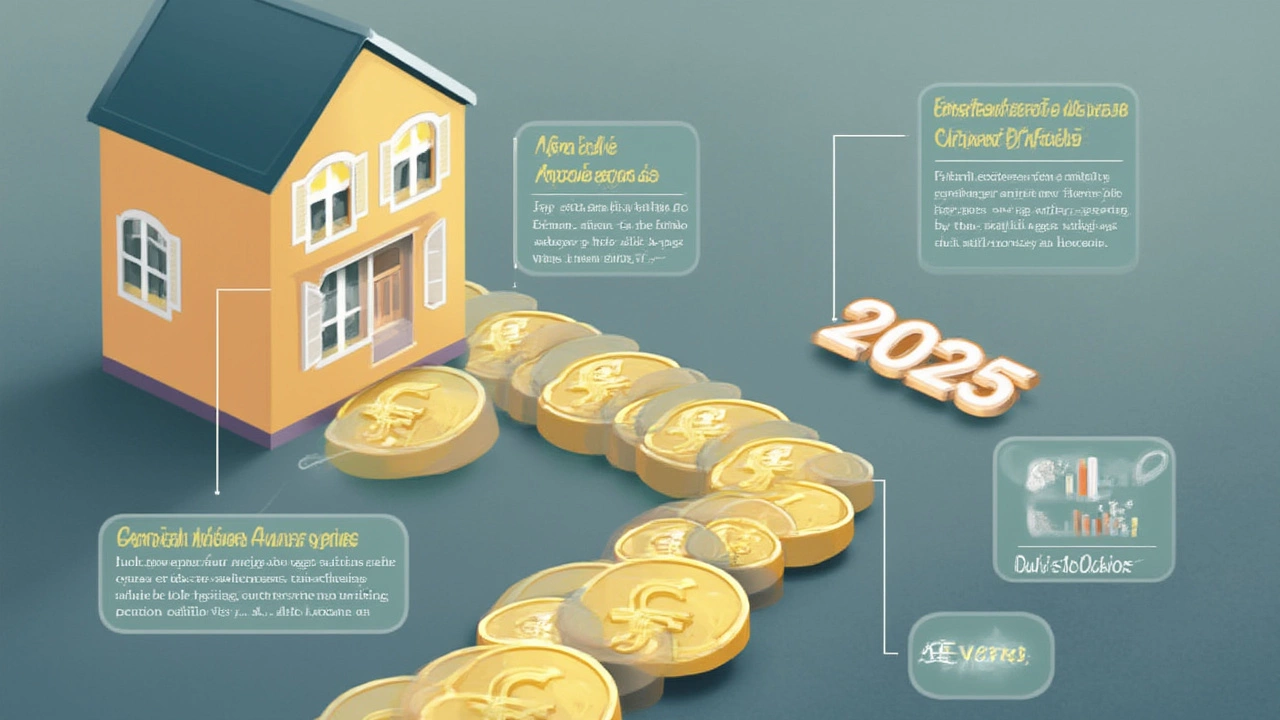The numbers might shock you. Equity release can give you fast cash in retirement, but what you pay back? That’s a detail that catches people off guard—whether you’re daydreaming about a cruise or just want to help your grandkids. A friend of mine once joked that equity release is Britain’s most expensive piggy bank. There’s some truth in that. If you’re reading this, you’re probably wondering: What’s the real cost of borrowing against your home? I’ve spent sleepless nights with spreadsheets, and—unlike my optimistic son Rory—I don’t just trust the glossy brochure promises. Let’s break down the real math and the tricks you need to watch out for.
Understanding Equity Release Repayments: The Basics
Equity release sounds simple, but the way repayment works isn’t always obvious at first glance. The two main types—lifetime mortgages and home reversion plans—handle repayments differently. With most lifetime mortgages (the popular choice by far), you don’t make regular monthly repayments like you would with a normal loan. Instead, the loan and interest build up over time and get repaid all at once, usually when the last homeowner dies or moves into long-term care.
You might hear “no monthly payments” and think it’s a free lunch. But the catch is compound interest. That means the interest gets added to the loan, and then you get charged interest on that too—year after year. Imagine dropping a snowball down a hill: small at first, but by the time it gets to the bottom, it’s huge. That’s how the debt grows.
Here’s how that snowball works in real life. Say you release £50,000 from your home using a lifetime mortgage. If your interest rate is 6%, and you don’t make any repayments, in 15 years, you’d owe around £120,000—not £50,000. That’s more than double, and that’s without borrowing more. Many people, including my mum’s neighbor in Kent, get shocked by that bill—nobody told them how fast it would balloon.
Home reversion is a bit different. You sell a part (or all) of your home to the provider and get a lump sum or regular payments. You don’t owe anything at the end, since you’ve traded your share of the house. But you won’t get the market value—usually just 20% to 60% of what your part is worth. Repayment isn’t an issue, but what your family inherits shrinks, and your right to future house price growth disappears for the part you’ve sold.
Everyone talks about the lump sum. Few spell out the cost of getting it. If you want to figure out what you’ll actually repay (or what your kids, like my Lila, will have left), it’s all about how long you live, how fast interest grows, and what options you choose.
How Interest and Repayment Add Up Over Time
Interest isn’t just a by-the-year thing—it works relentlessly, hour after hour. Let’s get a bit nerdy and look at numbers. The average equity release interest rate in early 2025 sits around 6.3%, according to the Equity Release Council. That’s higher than mortgage rates you might remember from your 30s. Compound that over a decade, and suddenly the total owed can easily double.
Let’s see a year-by-year example in a handy table. Assume you’ve taken £60,000 with an interest-only lifetime mortgage at 6.3% annual compound interest. No repayments are made; the total owed is what your estate pays back when you’re gone.
| Years Since Release | Amount Owed (£) |
|---|---|
| 0 | 60,000 |
| 5 | 81,372 |
| 10 | 110,408 |
| 15 | 149,841 |
| 20 | 203,360 |
What stands out? The longer you live (or the longer you stay in your home), the bigger the figure—and not by a little, by heaps. The knee-jerk reaction I had when I ran these calculations: “That’s a ton of money just to get access to your own house equity.” There’s a reason why financial advisers always say equity release is a ‘last resort’ for plugging gaps in retirement finances.
If you don’t like the sound of growing debt, you do have options. Some lifetime mortgages let you pay back the interest as you go along—these are called “interest-serviced plans.” If you pay the interest each month, the loan doesn’t balloon. Of course, that means making regular payments out of your pension or savings, so there’s a tradeoff. There are also “voluntary partial repayments,” where you can pay off up to 10% (sometimes more) of the loan each year without penalty. This helps keep the overall figure smaller. Loads of people never realise this flexibility exists; it’s worth asking about if you’re still weighing things up.
And here’s a stat hardly anyone checks: about 48% of people taking equity release in 2024 opted for plans allowing some repayments, according to Moneyfacts. That’s doubled in the past five years, probably because nobody wants to see their estate shrink for their children any more than necessary.

Factors Affecting Your Equity Release Repayments
The main thing people get wrong is thinking all equity release plans are the same. They’re not—even the costs aren’t fixed. Here’s what really changes how much you’ll repay:
- Interest rates: This is the obvious big one. Even a difference of 0.5% makes a big deal over 10 or 20 years. Check rates with as many providers as you can. It’s exactly like shopping for a mortgage, except the stakes are higher with compounding.
- Loan type: A drawdown lifetime mortgage lets you take cash in chunks, not all at once. You’re only charged interest on what you actually use, which keeps costs down.
- Age and health at entry: The older you are, the less time there is for interest to add up. Some companies offer higher lump sums for people with certain medical conditions, which can affect what you’ll owe at the end.
- Repayment features: As I said, plans that let you repay interest or chunks of the capital early will shrink how much is owed later.
- Length of the plan: If you stay in your home a long time after taking out the plan, interest snowballs more. If you go into care sooner, less is owed.
- Fees and setup costs: These don’t add to your loan (unless you roll them in), but they affect the net sum you receive and what needs to be repaid by your estate.
I once met a retired teacher who thought he’d picked the perfect plan—then the provider hiked the interest rate by 1% when his deal expired. That single percentage point meant an extra £27,000 over 15 years. Always read the fine print for rate guarantees; some deals offer fixed rates for life, others don’t.
And don’t forget property prices. If your house goes up in value, there may still be money left for your heirs. If it drops, you could end up with nothing to pass on. That’s why the “no negative equity guarantee” on most plans is absolutely essential: it protects your loved ones from owing money to the provider if the house sells for less than the amount due.
Pros and Cons: Balancing Freedom and Future Costs
People don’t take equity release because it’s cheap—they do it because they want freedom in their golden years, or because other options have run dry. The extra holiday, the home renovation, the boost for a grandchild’s deposit—they’re real needs. But the costs can sneak up on even the most careful planners.
The biggest upside is obvious: you get money without needing to move home. It doesn’t usually affect your State Pension, and you keep full legal ownership with a lifetime mortgage (not with home reversion). You also never have to make repayments unless you want to. If you’re 70, your home is worth £400,000, and you release £40,000, that could feel like a windfall.
The downsides? The money doesn’t come for free. Compound interest is the silent thief. If you live to a ripe old age (like my great-aunt did — 98 and unstoppable), the amount your family gets can be tiny compared to what you thought you’d leave them. And you might lose out on means-tested benefits if your cash increases too much, so check with a specialist adviser.
You also lose flexibility. If your plans or health change and you want to move somewhere smaller, there can be penalties or restrictions, unless your provider offers “porting.” And not every home is eligible—flats in retirement villages and certain types of properties get rejected for equity release altogether.
One trick often missed: if you have family, talk through it with them first. I’ve seen family feuds flare up over equity release—even in the closest clans. If your kids expect an inheritance, transparency is key. My son Rory would definitely want to know if the family home was tied up for decades.
- Try online equity release calculators, but check the assumptions—they usually show best-case scenarios.
- Speak to a financial adviser regulated by the FCA and a solicitor before signing.
- Be wary of providers outside the Equity Release Council—they might lack safeguards.

Tips to Minimise Repayments and Protect Your Inheritance
You can’t dodge the cost of equity release, but there are ways to soften the blow. The right approach depends on your finances and family plans. Here’s what works in 2025 (I wish I’d known all of these when my mate’s mum got her plan in 2014):
- Go for drawdown rather than a lump sum if you don’t need all your cash up front. Interest only racks up on money you’ve actually released.
- Pick a plan that lets you make voluntary repayments without penalty. Even clearing small amounts each year can knock thousands off the total debt.
- Compare fixed-rate lifetime mortgages. Variable rates can jump, and over a decade that risk is massive.
- Ask your adviser about inheritance protection. Some plans allow you to ring-fence a percentage of your home’s value to guarantee something will go to your heirs, no matter how much you borrow.
- Don’t be afraid to negotiate: a few tenths of a percent on interest rates save big money over time.
- Review your plan and your health every few years. If you develop a qualifying medical condition, you might be able to switch to a plan with better terms and a bigger payout.
- Make sure your provider is a member of the Equity Release Council—this ensures you get a "no negative equity" guarantee (equity release repayment safety net for your family).
One last thought: equity release isn’t the enemy of a happy retirement, it’s just complicated. If it helps you—and your family understands the real trade-offs—then it can be a useful tool. But read every scrap of paperwork. Ask all the awkward questions. A few hours of research now could save your heirs tens of thousands of pounds, and might keep Sunday dinner arguments at bay.

